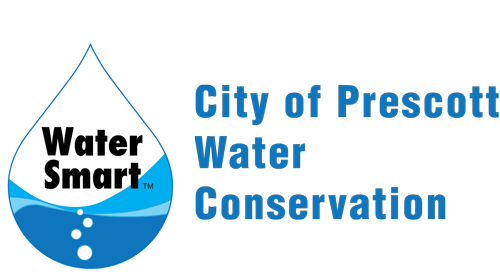Indoor
WATER conservation
Water Conservation
Starts At Home
In an era of growing water scarcity, it’s crucial to take proactive measures to conserve water. By implementing a few simple changes, you can help preserve this vital resource for future generations.
Water Saving
In The Kitchen
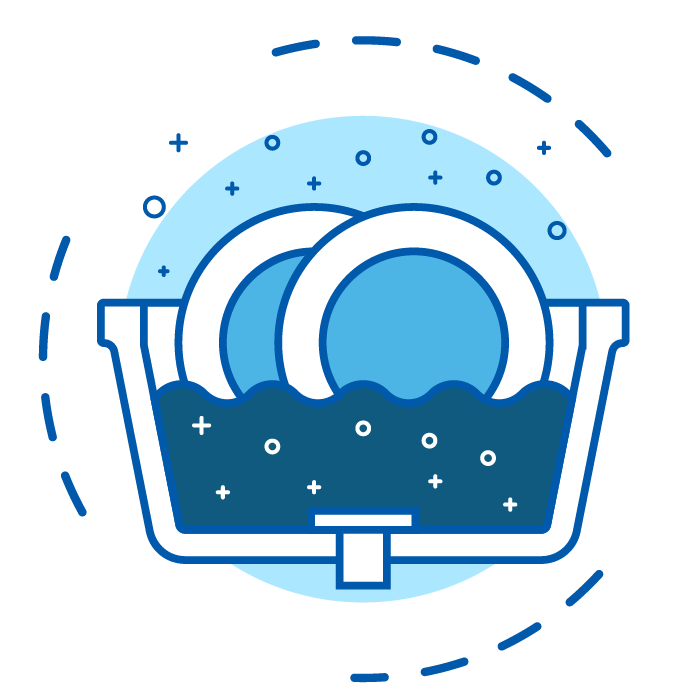
Store Water In the Fridge
Store drinking water in the refrigerator instead of letting the tap run while you’re waiting for cool water to flow.
Start Collecting Food Scraps
Kitchen sink garbage disposals use large amounts of water when operated correctly. Disposals can also add 50% to your sewer system volume and lead to septic system problems. Chose to scrape food waste into a garbage can or composting instead.
Skip the drip - fill the sink
When washing dishes by hand, fill one sink halfway with soapy water. Fill the other sink halfway with rinse water.
Make Simple Sink Repairs/Install A Sink Aerator
For rinsing dishes and other sink uses, install an aerator.
Only Run A Full Dishwasher
Run the dishwasher only when it is full and avoid the high electric rate times of 4 –7 PM.
Chose Your Dishwasher Cycle Wisely
Did you know that your Pots/Pans, Super and Power Cycles can use up to 3 times as much water as Normal cycle? Normal cycle typically will use less water than Auto. If you are unsure, stick to Normal cycle or refer to your owner’s manual to learn more.
Purchase A High Efficiency Dishwasher
Old inefficient dishwashers can use up to 16 gallons of water per cycle, while modern efficient dishwashers use 3.22 gallons on average. Imagine if every customer saved 4 or more gallons of water each time they used their dishwasher! Visit energystar.gov/productfinder to choose an affordable, efficient dishwasher.
Reduce Water
In The Bathroom
Nearly 75% of water used indoors is in the bathroom.
Baths, showers, and toilet flushing account for most of this.
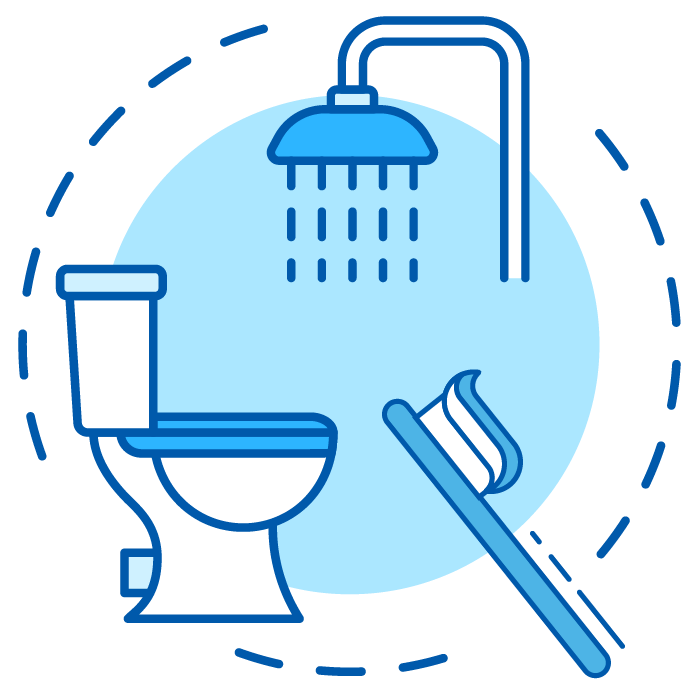
The Shower and Bath
- Install an EPA WaterSense low-flow showerhead to reduce water used each minute to 2.0 gallon or less. Today there are many high pressure, low flow showerheads that reduce water use while ensuring your shower is enjoyable and effective. Flow restrictors can also be installed to reduce or stop the flow of water when it is not needed.
- For those times when taking a bath is necessary, only use enough water to cover your navel. Put the stopper in and turn on the water. Let it run until the water gets hot, then add additional cold water to adjust the temperature.
- Keep a bucket in the shower to catch the cold water as the shower water heats up. Use this water for plants or to flush a toilet.
Turn Off The Tap
Don’t let the water run while brushing your teeth, washing your face, or shaving.
Make Simple Repairs/Install Aerators
Repair dripping faucets by replacing washers. If your faucet is dripping at a rate of only one drop per second, you can expect to waste 2,700 gallons of water per year! If the aerator on your faucet (look for a number stamped on the side of the aerator) is greater than 1.5 gpm (gallons per minute), replace your aerator with a lower flow aerator. Today’s designs ensure flows as low as .35 gpm can provide the performance needed.
Toilet, Shower and Tub Tips
THE TOILET
- Consider buying/replacing toilets with a 1.6 gallon or HIGHER flush rate with high efficiency toilets. Visit the EPA WaterSense Search Tool and select 1.28 or lower gpf options. Click here to learn how replacing your toilet may qualify for up to $200 in utility bill rebates! Worried about low flow toilet performance? Click here to view flush performance scores on most available toilet models.
- Check your toilet periodically for leaks. Place a few drops of food coloring in the tank. If you have a leak, color will appear in the toilet bowl within 30 minutes. This indicates the flapper needs to be replaced.
- If your toilet makes a gurgling sound, adjust, or replace your flush valve.
- A kink in a flapper chain may prevent the flapper from closing properly, causing the toilet to run. An easy way to prevent this is to thread the chain through a short piece of a plastic straw. The chain can’t turn back on itself and kink.
- If your toilet has a 1.6 gallon per flush tank or higher (volume will be stamped on the inner tank wall), place a water filled one-quart plastic bottle in the toilet tank. To anchor the bottle, fill it partially with sand or any nontoxic heavy substance. This simple trick can save five or more gallons a day for a family of four!
- To prevent sewage/septic backups and a need for multiple flushes, flush toilet paper ONLY.
TURN ON THE TUNES
- Try to time the length of your shower to your favorite song!
Limit Water Use
House Wide
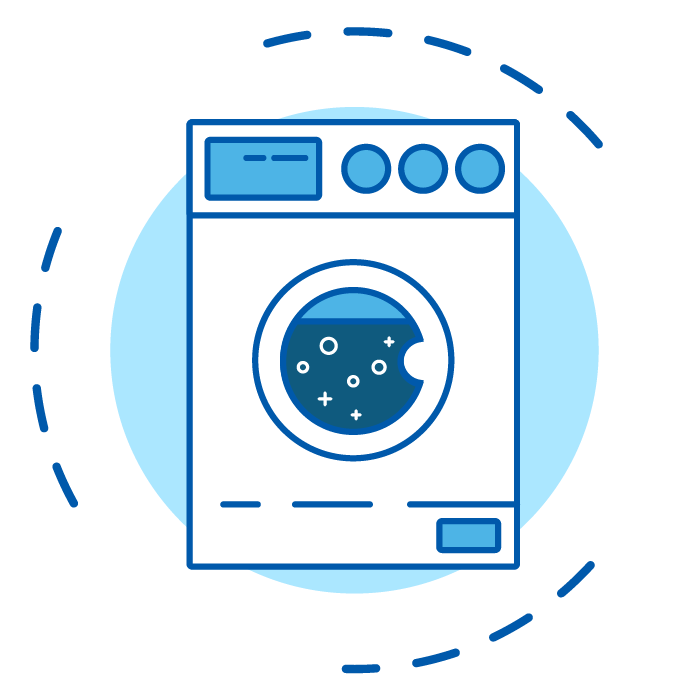
Choose a High Efficiency Washing Machine
Consider purchasing a high efficiency washing machine (front loading or top loading styles) to replace your current machine. High efficiency washers use an average of 30% less water than regular washers. The lower the machine’s Integrated Water Factor (IWF), the more water you will save. Look for an IWF rating of 3.2 or lower for standard washers. City customers who replace existing washers with qualifying units can earn a $200 utility bill rebate! Browse the Consortium for Energy Efficiency List or visit the Searchable Energy Star Product Finder to find qualifying machines that meet your needs.
Save Chores For the Weekend
If possible, operate your washing machine only when full, or set water level for the size load you are washing. You can save money by doing this chore on the weekends.
Get Paid For An Upgrade
Swap Out Your Washer
Model must be on this list at time of purchase to qualify for the $200 rebate for city sewer customers or $250 for city septic system customers.
Skip The Dryer
Hang Clothes To Dry
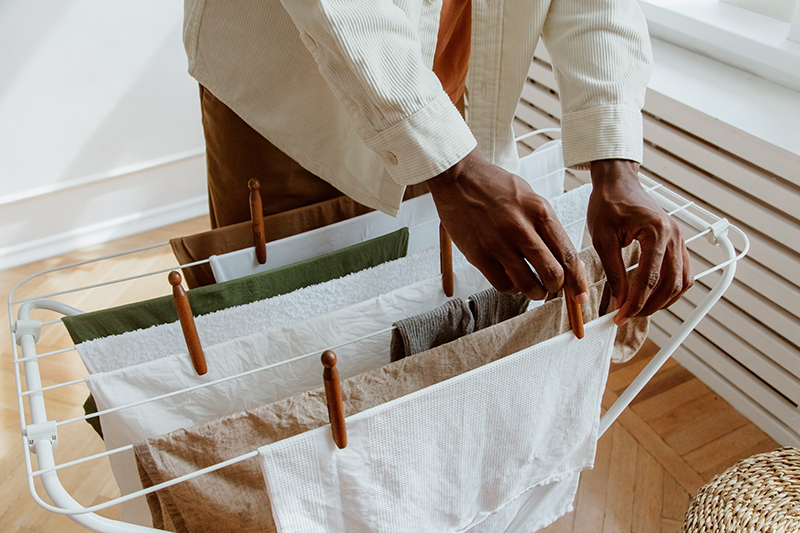
Save Energy & Water
Using a dryer to dry your clothes can consume a lot of energy. Power plants require vast amounts of water to generate steam to drive turbines, cool their equipment, and carry away waste heat. By reducing your energy usage, you can help to reduce the amount of water that is required to generate the electricity you use.
an Energy saving habit
Reducing your energy usage can help to promote conservation of all resources, including water. By adopting energy-saving habits such as turning off lights when they are not needed, adjusting the thermostat, and using energy-efficient appliances, you can help to reduce your overall environmental impact and promote sustainable use of resources.
Do Your Part
Be WaterSmart
Curious if your water conservation efforts pay off? View your eligibility for incentives and rebates below.
